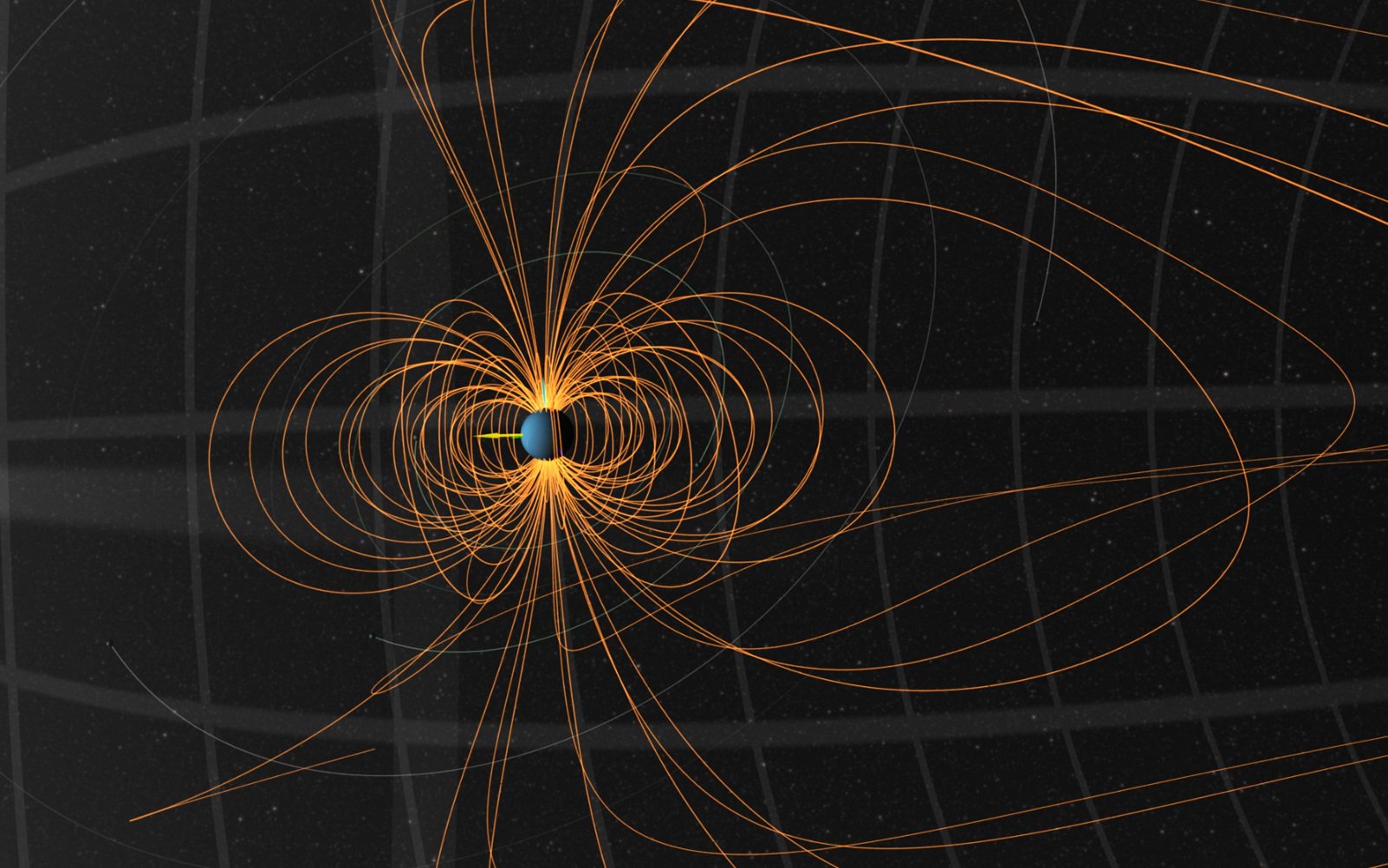Strange-type ice: Researchers have gained new insights into the formation of so-called super-ice under heat and high pressure. It is a crystalline form of water that conducts electricity. It can occur naturally in the water planets Uranus and Neptune. In addition to their significance for basic physical research, the findings also shed light on the origin of these two celestial bodies’ unusual magnetic fields.
We know water as vapor, liquid, or ice. The last of these three physical states is known to be cold. However, this is only the first type of crystalline substance. In this version, under conditions of Earth pressure and temperatures below zero degrees Celsius, water molecules are arranged in a network linked to each other by hydrogen bonds between hydrogen and oxygen atoms. But this is not the only possible version of water ice: under conditions of extreme temperature and pressure, various other forms with different properties can form.
The so-called super-ice shape is of particular interest. In the case of particularly extreme environmental values, a special crystal structure is formed: semi-solid, semi-liquid and electrically conductive. The presence of super ice has been predicted on the basis of various models and its formation has been observed under harsh laboratory conditions. However, some aspects of the formation of this literally interesting form of water ice as well as some features have remained unclear until now. So an international team of researchers has continued to investigate the mysteries of the extreme state of water.
Hot “snow squeezing” in the lab
To do this, the scientists generated pressures of up to 150 gigapascals — about 1.5 million times the atmospheric pressure — in so-called diamond seal cells the size of a computer mouse. A laser was used to bring water in the micro-sample chamber to temperatures of up to 6,227°C. As the researchers explained, conditions such as those found in the interior of the planets Neptune or Uranus at a depth of several thousand kilometers prevailed. With the help of X-ray diffraction, the scientists observed how the crystal structure of H₂O changes under these conditions. Optical spectroscopy methods were also used to determine the electrical conductivity.
As the researchers reported, they were able to record how the structure of the water changed in the course of the experiments. Initially, the oxygen and hydrogen atoms moved slightly around their fixed positions. Then only the oxygen remained stable and finally formed its cubic crystal lattice. As the temperature continues to rise, the hydrogen ionizes, releasing its electron into the oxygen lattice. Then the atomic nucleus – the positively charged hydrogen proton – became mobile within this solid. The scientists explained that this led to an electrical conduction. In this way, the hybrid version of solids and liquids – ionic super-ice was formed. The special thing about it was that the researchers were now able to identify two sets of temperatures and pressures at which ionic super-ice phases form.
Importance of planetary research
Building on these lab results, co-author Sergei Lobanov of the German Research Center for Geosciences in Potsdam is now looking for Uranus and Neptune: “Our research combines fundamental physical and geological interests. Because water also plays an important role in the interior of many planets — in the case of gaseous planets. High water, Uranus and Neptune also create unusual planetary magnetic fields,” says Lobanov. This is not parallel and symmetric to the axis of rotation, as in the case of the Earth, but it is tilted and not centered. They are not created by the movement of liquid iron in the core. The magnetic fields of two planets are believed to be caused by a water-rich, conductive layer.
The new results now provide more information, as the scientists reported: “In the phase diagram, we can plot the pressure and temperature inside Uranus and Neptune. The pressure can roughly be used as a measure of depth within the planets. On the basis of the phase boundaries, which we measured more accurately, we can now read that in both planets there is liquid approximately in the upper third and that there is super-ionic ice in the deeper interior. This confirms predictions about the origin of the observed magnetic fields,” explains Lobanov.
But the questions remain unanswered. And as Lobanov announced, tests in the hyperbaric laboratory must now continue. With the help of more accurate insights into the composition and properties of the ice phases, scientists want to better clarify the internal structure and magnetic fields of the two gaseous planets.
Source: Helmholtz Center Potsdam – GFZ German Research Center for Geoscience, Carnegie Institution for Science, Specialized article: Nature Physics, doi: s41567-021-01351-8

“Alcohol buff. Troublemaker. Introvert. Student. Social media lover. Web ninja. Bacon fan. Reader.”







More Stories
Intelligence and Alzheimer's disease: How fit is your brain? Your eyes guide her
Can you feel climate change? This installation visualizes science
This vaccine eliminates all viruses